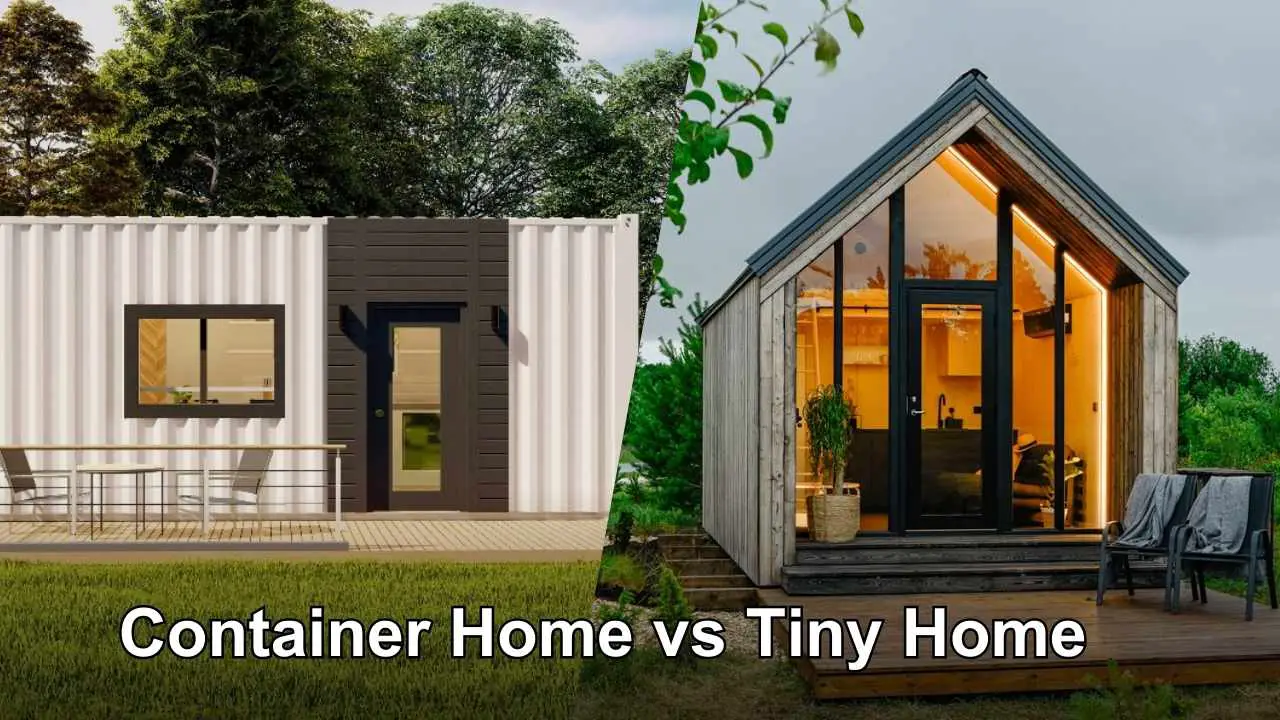Are you torn between the idea of living in a container home or a tiny home? It’s time to weigh the pros and cons and make an informed decision.
Container homes and tiny homes both offer innovative solutions to compact living, but they differ in construction and design. Container homes are constructed from shipping containers. Tiny homes are small dwellings designed to maximize functionality and minimize living space.
In this comprehensive article, we will compare container homes and tiny homes, providing you with all the necessary information to help you make the right choice.
Container Home vs Tiny Home: A Comprehensive Comparison
Container homes, made from shipping containers, offer durability and affordability. On the other hand, tiny homes are compact yet customizable dwellings that allow for minimalist living. Which one is better?
| Category | Container Home | Tiny Home |
| Construction and Design | Made from repurposed shipping containers | Built from scratch using traditional construction methods |
| Size and Space | Large | Small |
| Mobility and Portability | Less portable | More portable |
| Cost | Less expensive to build | More expensive to build |
| Sustainability and Energy-Efficiency | Sustainable if built using recycled materials and energy-efficient features | Sustainable if built using recycled materials and energy-efficient features |
| Customization | Less customizable due to the shape and size of the container | More customizable |
| Comfort and Livability | Can be just as comfortable and livable as a traditional home | May feel more cramped due to smaller size |
| Environmental Impact | Can help reduce waste by repurposing shipping containers | Can help reduce waste by utilizing recyclable materials |
There are several vital points to consider when comparing container homes and tiny homes. Let’s look at each factor.
Construction and Design Differences
For construction and design differences between container homes and tiny homes, you’ll notice that container homes often have a more industrial look due to their steel exterior. These homes can be built using various materials such as wood, metal, or glass for the interior walls, floors, and ceilings.
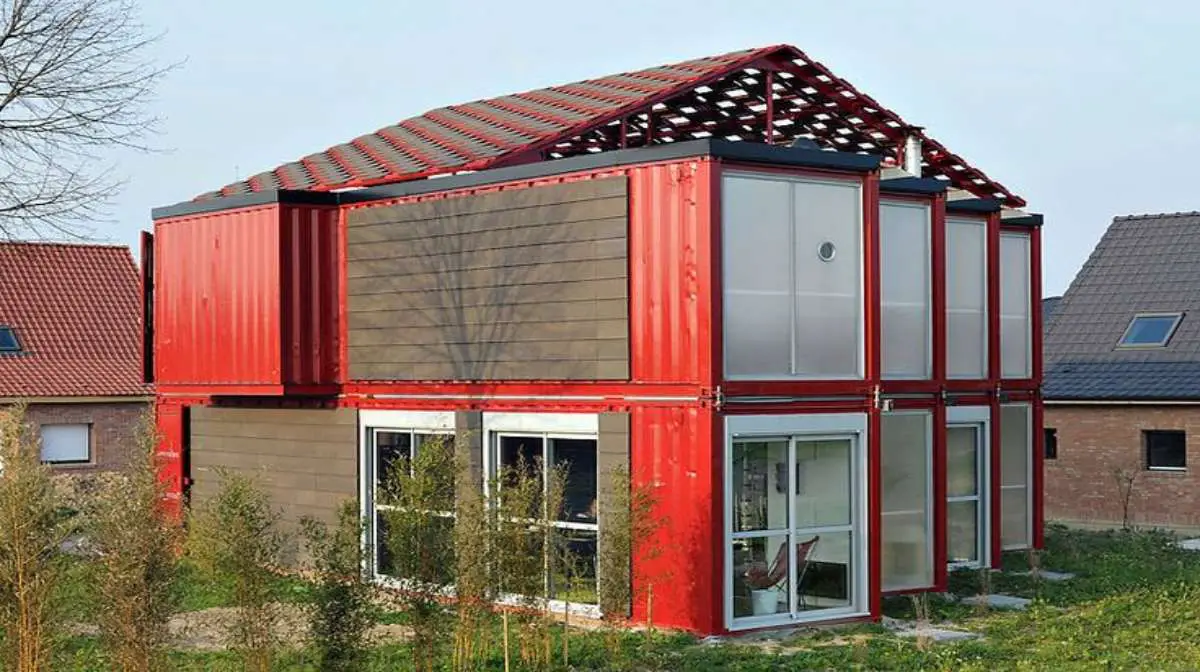
Building regulations may vary depending on location, but both types of homes need to comply with local codes and zoning requirements.
Regarding architectural styles, tiny homes offer more flexibility regarding design options, whereas container homes typically have a more standardized layout.
Construction time frames for container homes can be shorter due to the prefabricated nature of shipping containers.
In terms of maintenance requirements, both types of homes require regular upkeep, including insulation checks, plumbing maintenance, and general cleaning. Container and tiny house plumbing often involves space-saving solutions and unique designs to make the most of limited square footage.
Size and Space Disparities
If you’re looking to maximize your living space, you’ll be amazed at the differences in size and layout options between these two unique housing solutions.
Shipping container homes offer a more significant footprint than tiny homes, thanks to using repurposed shipping containers. With sizes ranging from 20 to 40 feet long, container homes provide ample room for various rooms and amenities.
On the other hand, tiny homes are typically smaller in size, often measuring around 200-400 square feet. However, they make up for what they lack in size in clever space utilization and interior design.
Tiny homes are carefully designed to optimize every inch of available space with innovative storage solutions such as hidden compartments and multi-purpose furniture. They prioritize functionality and practicality without compromising comfort or style.
Whether you choose a container home or a tiny home, both options offer unique ways to maximize your living space while providing a cozy and efficient dwelling that suits your needs.
Mobility and Portability Differences
Regarding mobility and portability, container homes have a clear advantage over tiny homes. Container homes are designed to be transported by truck or ship, making them easier to move from one location to another.
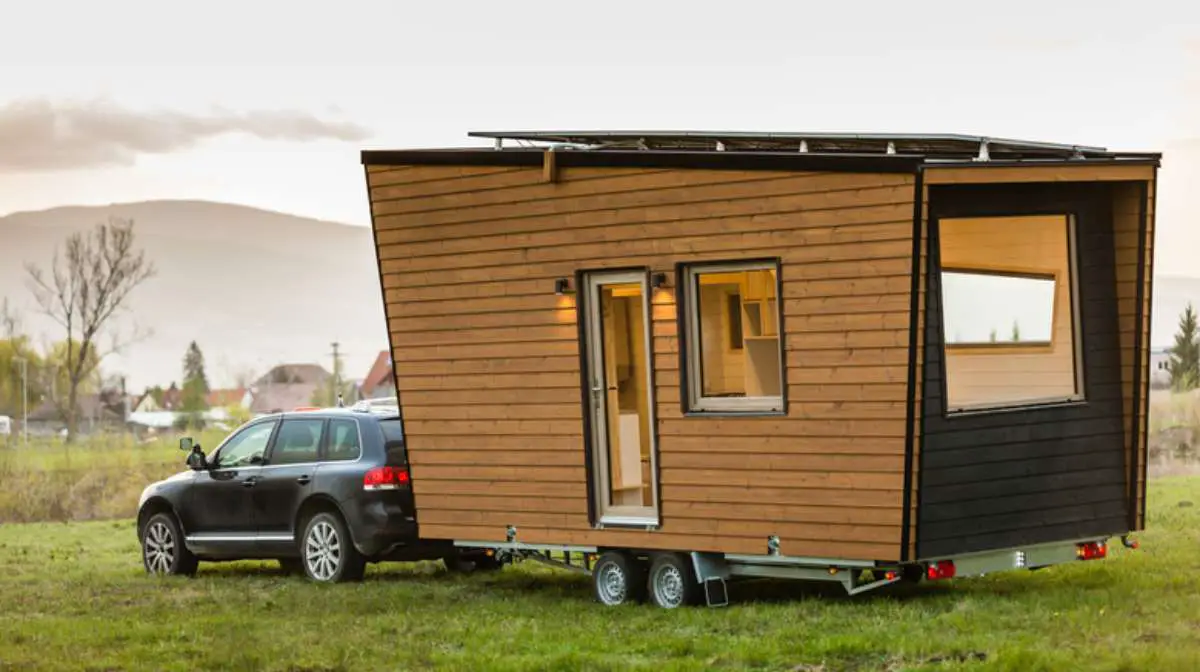
However, this mobility comes with its own set of challenges. Transportation challenges such as narrow roads or bridges may limit the accessibility of container homes in certain areas.
When it comes to foundation requirements, container homes are typically built on a concrete slab or piers, while tiny homes can be placed on wheels or skids. This means container homes require a more permanent foundation, making them less adaptable for frequent relocations than tiny homes.
Another factor to consider is adaptability to different climates. Container homes are made from steel, providing better insulation and durability against storms and extreme weather conditions compared to tiny homes, often constructed with lighter materials.
Durability and lifespan also play a crucial role in choosing between the two options. The lifespan of container homes is influenced by their strong steel frames, which give them an estimated lifespan of around 25 years or more with proper maintenance.
On the other hand, tiny houses may have shorter lifespans due to their lighter construction materials.
Cost Comparison
The price tags of these unique housing options can vary significantly. When it comes to affordability, the cost of container homes is generally lower cost compared to tiny homes. This is mainly due to the materials and construction costs involved.
Construction of a brand-new single shipping container house may cost between $1,500 to $15,000. Even with additional expenditures related to constructing a new house design, you may spend roughly 5% less than you would on a conventional home design.
Of course, this sum may vary depending on the number of shipping containers you buy and the location of the construction of your container home.
On the other side, building a tiny home may be nearly twice as expensive per square foot as a typical home. The initial cost of a tiny home design is $100,000 or more at an average price of $400 per square foot.
This sum may rise if you spend more on specialized items, enabling you to live off the grid without having direct electrical and plumbing lines running through your house.
In terms of long-term maintenance expenses, container homes, and tiny homes require regular upkeep, but container homes tend to have lower maintenance costs. Container homes typically have higher resale value due to their durability and unique design aesthetic.
If affordability is your top priority while maintaining quality and potential financial gains in the long run, a container home may be the better choice.
Sustainability and Energy-Efficiency Variances
Regarding sustainable materials, container homes, and tiny homes offer environmentally-friendly options such as reclaimed wood or recycled materials. However, container homes have an edge with repurposed shipping containers, reducing waste and promoting resourcefulness.
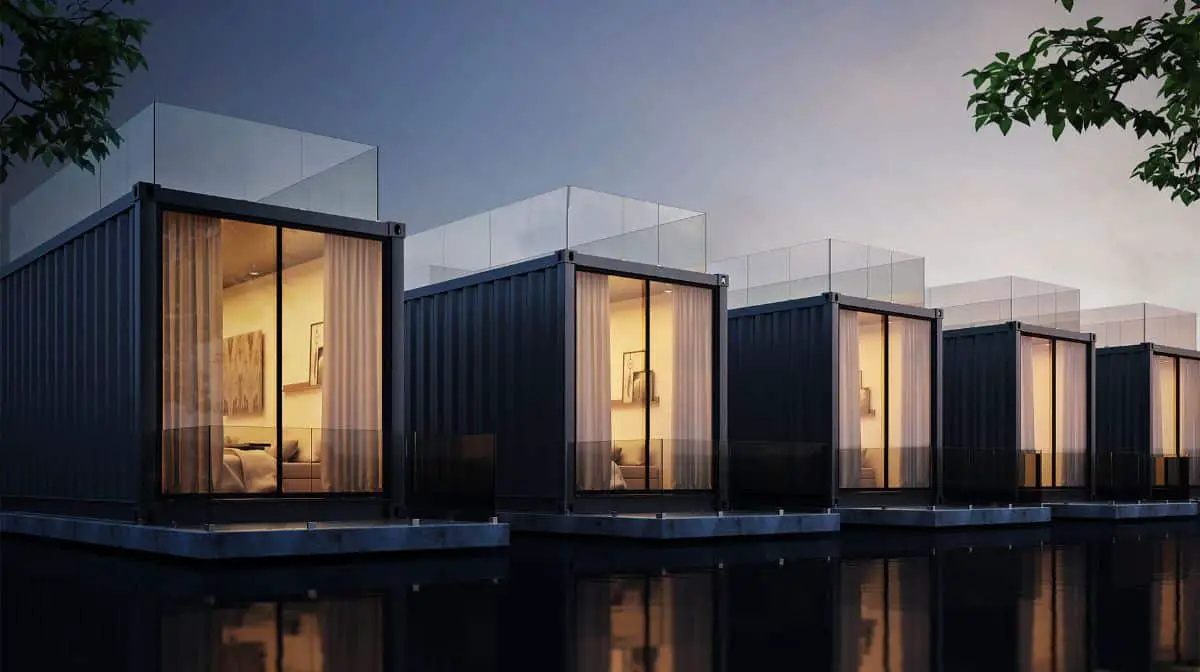
Regarding energy efficiency, both types of homes can incorporate energy-efficient appliances and renewable energy sources like solar panels.
Insulation techniques play a crucial role in conserving energy, and both container homes and tiny homes can employ effective insulation methods to reduce heat loss or gain.
Additionally, water conservation is attainable in both dwellings through efficient plumbing fixtures and rainwater harvesting systems. Combined with these features, container homes, and tiny homes provide sustainable living solutions for those seeking an eco-friendly lifestyle.
Customization Distinctions
While container homes and tiny homes offer opportunities for personalization, there are distinct differences in the level of customization that can be achieved.
Container homes provide more customization options due to their larger size and structural versatility. You can easily modify the interior walls and partitions to create separate rooms or open-concept spaces according to your preferences. Learning how to build container homes can be an exciting venture for those interested in alternative and cost-effective housing solutions.
Additionally, container homes allow more personalization choices when selecting finishes, materials, and fixtures.
On the other hand, tiny homes have limited space for customization but offer creative solutions within their compact footprint. Exterior modifications such as adding decks or balconies are possible but are more constrained than container homes.
Overall, both types of dwellings offer opportunities for customization; however, container homes provide greater scope for personalized design elements and modifications.
Comfort and Livability Comparison
With their limited space, tiny homes may be cozy cocoons for those seeking a minimalist lifestyle, while container homes offer more room to stretch out and create your oasis.
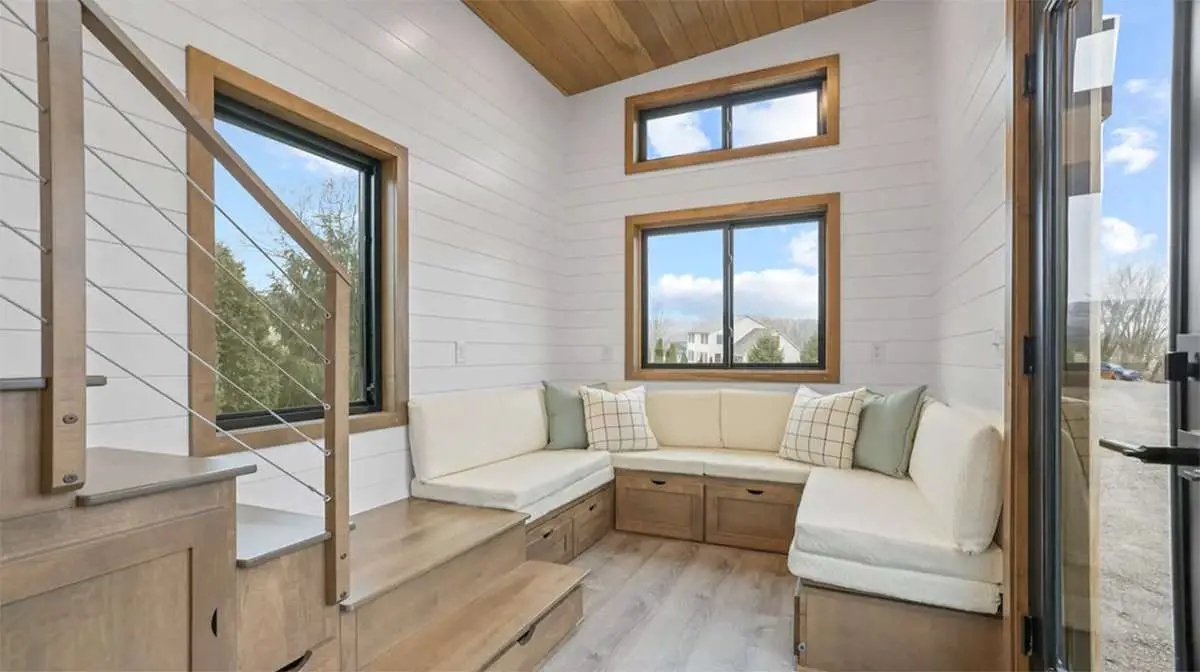
When it comes to comfort factors, both types of homes can provide a comfortable living environment, but container homes have the advantage of offering more space for customization.
Container homes allow for a broader range of interior design options, making creating a personalized and inviting space that suits your preferences easier. Additionally, container homes tend to have more storage solutions available due to their sizes.
If expenses are your concern, you might want to read more about the cost of large shipping containers.
Natural lighting is also an essential aspect of comfort in both types of homes. But container homes often have more oversized windows, allowing more natural light to flood the space.
In terms of heating and cooling, both types of homes can be equipped with efficient systems to maintain a comfortable temperature year-round. However, container homes may require less energy for heating and cooling due to their insulated metal walls.
Overall, whether you prefer the cozy charm of a tiny home or the spaciousness offered by a container home, there are plenty of comfort factors to consider when choosing between the two options.
Environmental Impact
When comparing container homes and tiny homes, it’s crucial to analyze their carbon footprint, materials used, energy consumption, waste management, and eco-friendly features.
Container homes typically have a lower carbon footprint compared to traditional houses due to their use of recycled shipping containers. These repurposed containers prevent the need for new construction materials, reducing overall waste.
Additionally, container homes often incorporate sustainable building practices such as solar panels or rainwater harvesting systems, further minimizing energy consumption.
In contrast, tiny homes prioritize minimalism and sustainability by utilizing renewable resources like reclaimed wood or bamboo flooring. They’re designed with efficient insulation and energy-efficient appliances to reduce energy consumption.
Containers and tiny homes offer eco-friendly features that contribute positively to waste management and environmental preservation. It ultimately comes down to personal preference regarding design aesthetics and the desired level of sustainability.
Container Home vs Tiny Home: Summary of Pros and Cons
Are shipping container homes cheaper to build? Are tiny homes a practical housing solution for the long term? Let’s dive into the pros and cons of container homes versus tiny homes to help you make an informed decision.
Container Homes
Container homes offer a range of benefits that make them popular for those seeking an eco-friendly option.
Pros:
- Eco-friendly, made from repurposed shipping containers
- Modular design for easy expansion or relocation
- Modern industrial aesthetics
- Durability against extreme weather conditions
Cons:
- Initial costs can be higher
- Limited design variety
Tiny Homes
Tiny homes often prioritize functionality over design, resulting in a simpler appearance and are generally more cost-effective.
Pros:
- Generally more affordable in the long run
- Simpler construction methods
- Functional and efficient use of space
Cons:
- More maintenance and repairs due to small size
- Can feel cramped and may not suit all lifestyles
Ultimately, choosing between container and tiny homes depends on personal preferences and priorities.
Which Home Option Suits You Best?

Are you trying to figure out which type of living space suits you best? When deciding between a container home and a tiny home, several factors must be considered.
First, let’s talk about affordability options. Container homes are more cost-effective as they utilize repurposed shipping containers, whereas tiny homes can vary in price depending on the materials used and customization.
Next, lifestyle considerations play a significant role. A container home might be ideal if you enjoy flexibility and mobility since they can be transported easily. On the other hand, if you prefer stability and permanence, a tiny home may be more suitable since they are typically built on foundations.
Building codes should also be taken into account. Container homes may have stricter regulations due to their unconventional construction method, while tiny homes often fall under the same rules as traditional houses. There are also considered worst states for tiny homes or container homes, making them unsuitable for living.
Maintenance requirements differ between the two types of homes. Container homes require minimal maintenance due to their sturdy and durable nature, while tiny homes might require regular upkeep like any other house.
Lastly, resale value is worth considering. Container and tiny homes have potential resale value; however, it ultimately depends on factors such as location and overall condition.
Considering these factors will help you determine which type of home aligns with your preferences and needs.
Making Your Decision: Which Compact Living Option Is Right for You?
In conclusion, when choosing between a container home and a tiny home, remember that each option has unique advantages and disadvantages.
While container homes offer durability and versatility with their robust structures, tiny homes provide a more compact and customizable living space.
To decide wisely, take into account your interests, lifestyle, and resources at hand.

